-
 Bitcoin
Bitcoin $106,754.6083
1.33% -
 Ethereum
Ethereum $2,625.8249
3.80% -
 Tether USDt
Tether USDt $1.0001
-0.03% -
 XRP
XRP $2.1891
1.67% -
 BNB
BNB $654.5220
0.66% -
 Solana
Solana $156.9428
7.28% -
 USDC
USDC $0.9998
0.00% -
 Dogecoin
Dogecoin $0.1780
1.14% -
 TRON
TRON $0.2706
-0.16% -
 Cardano
Cardano $0.6470
2.77% -
 Hyperliquid
Hyperliquid $44.6467
10.24% -
 Sui
Sui $3.1128
3.86% -
 Bitcoin Cash
Bitcoin Cash $455.7646
3.00% -
 Chainlink
Chainlink $13.6858
4.08% -
 UNUS SED LEO
UNUS SED LEO $9.2682
0.21% -
 Avalanche
Avalanche $19.7433
3.79% -
 Stellar
Stellar $0.2616
1.64% -
 Toncoin
Toncoin $3.0222
2.19% -
 Shiba Inu
Shiba Inu $0.0...01220
1.49% -
 Hedera
Hedera $0.1580
2.75% -
 Litecoin
Litecoin $87.4964
2.29% -
 Polkadot
Polkadot $3.8958
3.05% -
 Ethena USDe
Ethena USDe $1.0000
-0.04% -
 Monero
Monero $317.2263
0.26% -
 Bitget Token
Bitget Token $4.5985
1.68% -
 Dai
Dai $0.9999
0.00% -
 Pepe
Pepe $0.0...01140
2.44% -
 Uniswap
Uniswap $7.6065
5.29% -
 Pi
Pi $0.6042
-2.00% -
 Aave
Aave $289.6343
6.02%
What's the matter with the bottom volume stagnation? It may be that the main force is secretly laying out!
Bottom volume stagnation in crypto often signals stealth accumulation by institutional players, hinting at potential future price moves once buying pressure becomes visible.
Jun 16, 2025 at 10:49 pm
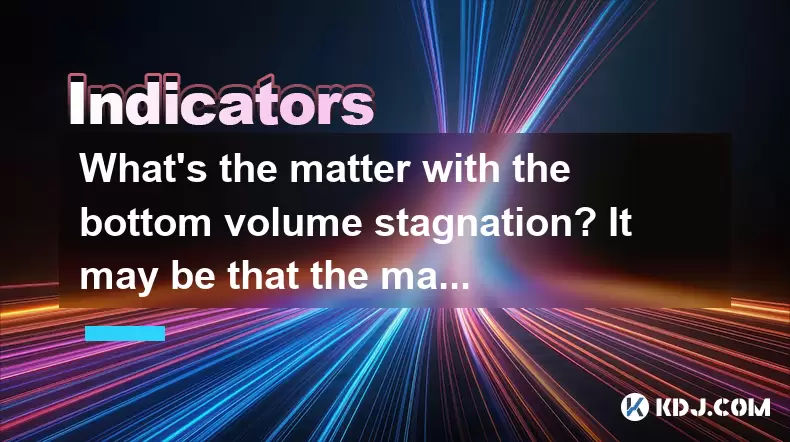
Understanding Bottom Volume Stagnation in Cryptocurrency Markets
In the cryptocurrency market, volume is a crucial indicator that reflects the level of interest and participation from traders. When the volume remains stagnant at the bottom of a price trend, it often raises concerns among investors and traders alike. This phenomenon, known as bottom volume stagnation, typically occurs after a significant price drop, where trading activity shows little to no increase despite the low price levels.
The key question here is: why would the market not show increased buying pressure when prices are attractive? One possible explanation lies in the behavior of large institutional players or "whales" who may be accumulating assets quietly without triggering noticeable spikes in trading volume.
Why Is Volume Important in Assessing Market Health?
Volume plays a pivotal role in technical analysis, especially in volatile markets like cryptocurrencies. A rising volume usually accompanies strong price movements, indicating genuine market sentiment. Conversely, low volume during price declines can suggest weak selling pressure, but it can also point to a lack of buyer confidence.
In a healthy downtrend reversal, one would expect to see increasing volume as buyers step in. However, stagnant volume at the bottom suggests that neither sellers nor buyers are aggressively participating. This could signal a period of consolidation or accumulation by major players who do not want to reveal their positions prematurely.
What Does It Mean When the Main Force Is Laying Out?
The term "main force" refers to large-scale investors or institutions with significant capital. These entities have the ability to influence market direction due to the sheer size of their trades. When they begin to accumulate positions without causing visible spikes in volume, it’s often referred to as stealth accumulation.
This strategy involves placing small, incremental buy orders over time to avoid detection. The goal is to acquire assets at lower prices without alerting retail traders who might then follow suit and drive up the price. In such scenarios, bottom volume stagnation becomes a sign of potential institutional buildup, rather than market weakness.
How Can You Identify Stealth Accumulation in Crypto Charts?
Detecting stealth accumulation requires careful observation of on-chain data and order book depth. Here are some signs that may indicate large players are laying out positions:
- Flat volume bars during prolonged downtrends
- Absence of panic selling even after negative news
- Sudden price bounces without corresponding volume surges
- Order book imbalances showing large hidden buy walls
Analyzing these patterns can help traders spot early signs of institutional involvement. Tools like Glassnode or Whale Alert provide insights into whale transactions and can assist in identifying accumulation zones.
Technical Indicators That May Confirm Institutional Activity
While volume alone isn’t sufficient to confirm stealth accumulation, combining it with other indicators can improve accuracy:
- On-Balance Volume (OBV): Tracks cumulative volume flow. Rising OBV during sideways price action may indicate underlying strength.
- Volume Weighted Average Price (VWAP): Large players often trade around VWAP levels to mask their activities.
- Order Flow Analysis: Watching for unusual bid-ask spreads or repeated rejections at certain price levels.
These tools don’t guarantee certainty but offer valuable clues when interpreted alongside broader market conditions.
Practical Steps to Monitor and Respond to Volume Stagnation
If you're an active trader or investor observing volume stagnation at the bottom, consider the following steps:
- Monitor on-chain metrics regularly using platforms like Glassnode or Santiment
- Track whale movements via alerts from services like Whale Alert or LookIntoBitcoin
- Set up alerts for sudden changes in volume or price spikes
- Avoid making impulsive decisions based solely on short-term volume trends
- Combine technical and fundamental analysis before entering or exiting positions
By adopting a multi-layered approach, you can better understand whether the volume stagnation is a sign of capitulation or a silent accumulation phase.
Frequently Asked Questions (FAQs)
Q: What is the difference between volume stagnation and low volume?
A: Volume stagnation implies that despite price movement or time passing, the total traded volume remains consistently flat. In contrast, low volume simply means fewer trades are occurring compared to average levels, which can happen in both trending and consolidating markets.
Q: How long can bottom volume stagnation last in crypto markets?
A: There's no fixed duration, as it depends on market psychology and external factors. Some periods last days, while others stretch into weeks. The key is to observe if price eventually breaks out with confirmed volume, signaling the end of accumulation.
Q: Can retail traders benefit from recognizing stealth accumulation?
A: Yes, but with caution. Recognizing institutional accumulation patterns allows retail traders to position themselves ahead of potential breakouts. However, timing entry points accurately is challenging and should be done with strict risk management.
Q: Should I buy when there's volume stagnation at the bottom?
A: Not necessarily. Volume stagnation alone isn't a reliable buy signal. It should be analyzed in conjunction with other indicators and fundamentals. Waiting for confirmation through a breakout or volume surge is generally safer.
Disclaimer:info@kdj.com
The information provided is not trading advice. kdj.com does not assume any responsibility for any investments made based on the information provided in this article. Cryptocurrencies are highly volatile and it is highly recommended that you invest with caution after thorough research!
If you believe that the content used on this website infringes your copyright, please contact us immediately (info@kdj.com) and we will delete it promptly.
- 2025-W Uncirculated American Gold Eagle and Dr. Vera Rubin Quarter Mark New Products
- 2025-06-13 06:25:13
- Ruvi AI (RVU) Leverages Blockchain and Artificial Intelligence to Disrupt Marketing, Entertainment, and Finance
- 2025-06-13 07:05:12
- H100 Group AB Raises 101 Million SEK (Approximately $10.6 Million) to Bolster Bitcoin Reserves
- 2025-06-13 06:25:13
- Galaxy Digital CEO Mike Novogratz Says Bitcoin Will Replace Gold and Go to $1,000,000
- 2025-06-13 06:45:13
- Trust Wallet Token (TWT) Price Drops 5.7% as RWA Integration Plans Ignite Excitement
- 2025-06-13 06:45:13
- Ethereum (ETH) Is in the Second Phase of a Three-Stage Market Cycle
- 2025-06-13 07:25:13
Related knowledge
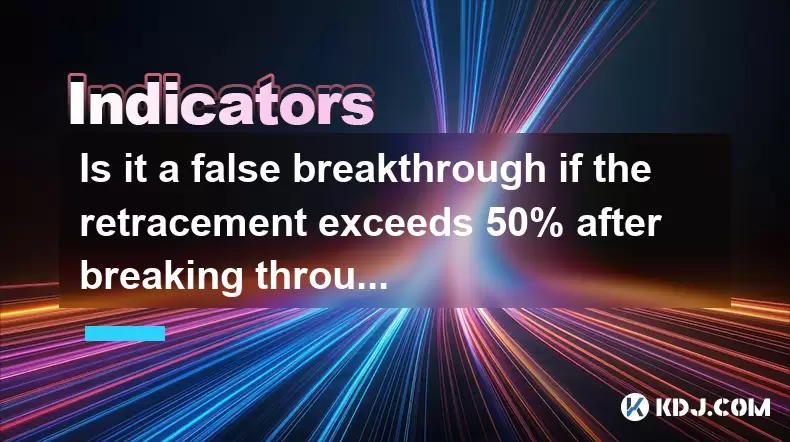
Is it a false breakthrough if the retracement exceeds 50% after breaking through the platform?
Jun 17,2025 at 08:01pm
Understanding Breakouts and Retracements in Cryptocurrency TradingIn cryptocurrency trading, breakouts refer to when the price of an asset moves beyond a defined support or resistance level with increased volume. These events often attract traders looking to capitalize on momentum. However, not all breakouts are valid. A false breakout, also known as a ...
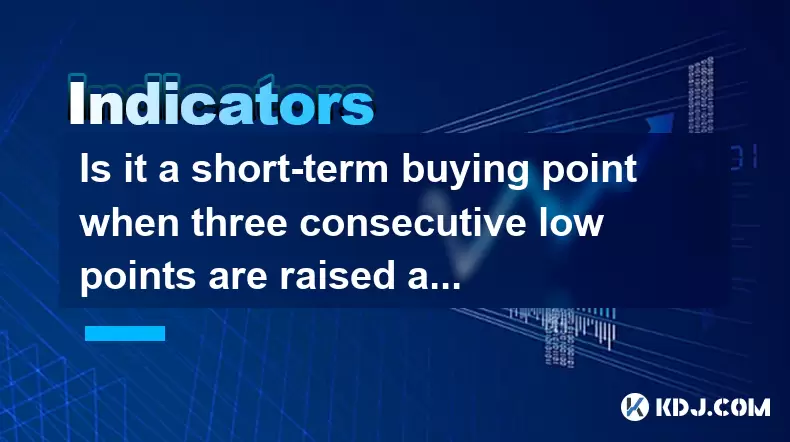
Is it a short-term buying point when three consecutive low points are raised at the 30-minute level?
Jun 17,2025 at 08:14pm
Understanding the Three Consecutive Low Points PatternIn technical analysis, identifying patterns in price movements is essential for making informed trading decisions. One such pattern that traders often observe is when three consecutive low points are raised within a specific timeframe — in this case, the 30-minute chart. This pattern suggests a poten...
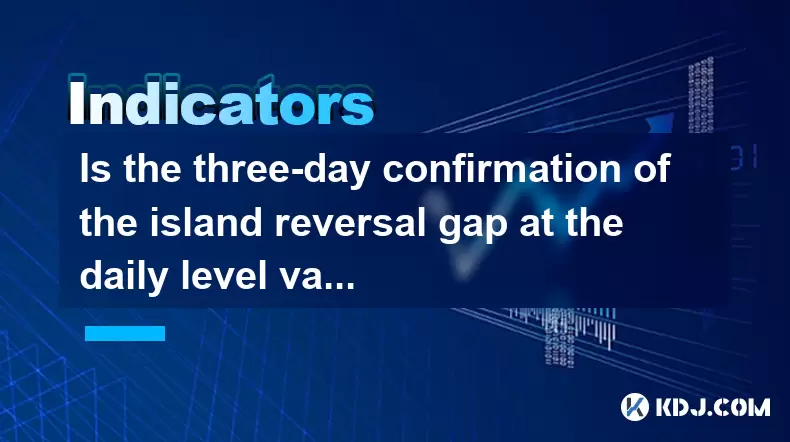
Is the three-day confirmation of the island reversal gap at the daily level valid?
Jun 17,2025 at 09:49pm
Understanding the Island Reversal Gap in Cryptocurrency TradingIn cryptocurrency trading, technical analysis plays a pivotal role in identifying potential market reversals. One such pattern is the island reversal gap, which signals a possible trend change. This pattern consists of a gap followed by a period of consolidation or sideways movement and then...
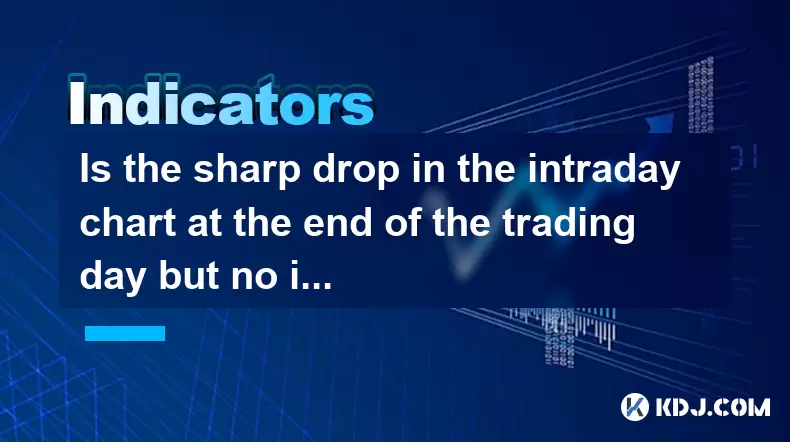
Is the sharp drop in the intraday chart at the end of the trading day but no increase in volume a trap to sell?
Jun 17,2025 at 08:35pm
Understanding the Intraday Chart DynamicsIn cryptocurrency trading, intraday charts are widely used by traders to analyze short-term price movements. These charts display price fluctuations within a single trading day and help traders make informed decisions based on real-time data. One common phenomenon observed is a sharp drop in price near the end of...
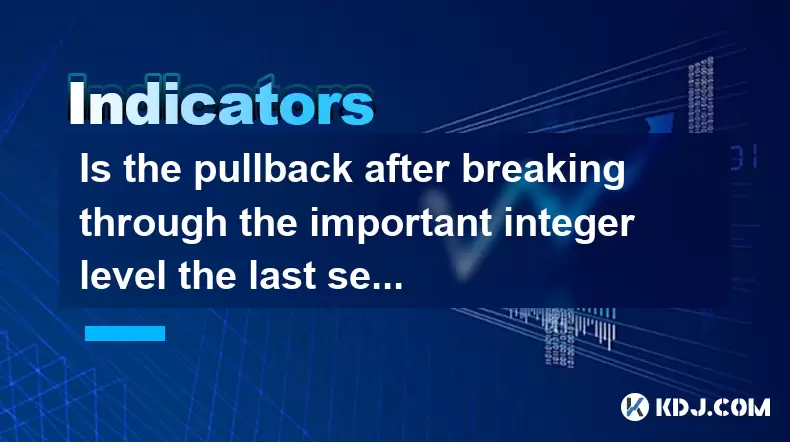
Is the pullback after breaking through the important integer level the last selling point?
Jun 17,2025 at 08:57pm
Understanding Important Integer Levels in Cryptocurrency TradingIn the world of cryptocurrency trading, certain price levels hold significant psychological and technical importance. These are commonly referred to as important integer levels—such as $10,000 for Bitcoin or $1,000 for Ethereum. These levels often act as strong support or resistance zones d...
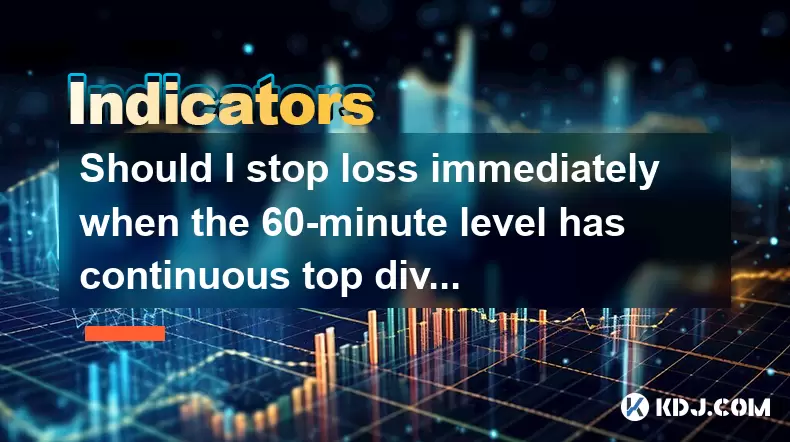
Should I stop loss immediately when the 60-minute level has continuous top divergence?
Jun 17,2025 at 05:28pm
Understanding Top Divergence in the 60-Minute ChartIn cryptocurrency trading, top divergence refers to a technical signal where the price of an asset makes higher highs while the indicator (often RSI or MACD) makes lower lows. This is commonly interpreted as a sign of weakening momentum and potential reversal. When this occurs on the 60-minute chart, it...

Is it a false breakthrough if the retracement exceeds 50% after breaking through the platform?
Jun 17,2025 at 08:01pm
Understanding Breakouts and Retracements in Cryptocurrency TradingIn cryptocurrency trading, breakouts refer to when the price of an asset moves beyond a defined support or resistance level with increased volume. These events often attract traders looking to capitalize on momentum. However, not all breakouts are valid. A false breakout, also known as a ...

Is it a short-term buying point when three consecutive low points are raised at the 30-minute level?
Jun 17,2025 at 08:14pm
Understanding the Three Consecutive Low Points PatternIn technical analysis, identifying patterns in price movements is essential for making informed trading decisions. One such pattern that traders often observe is when three consecutive low points are raised within a specific timeframe — in this case, the 30-minute chart. This pattern suggests a poten...

Is the three-day confirmation of the island reversal gap at the daily level valid?
Jun 17,2025 at 09:49pm
Understanding the Island Reversal Gap in Cryptocurrency TradingIn cryptocurrency trading, technical analysis plays a pivotal role in identifying potential market reversals. One such pattern is the island reversal gap, which signals a possible trend change. This pattern consists of a gap followed by a period of consolidation or sideways movement and then...

Is the sharp drop in the intraday chart at the end of the trading day but no increase in volume a trap to sell?
Jun 17,2025 at 08:35pm
Understanding the Intraday Chart DynamicsIn cryptocurrency trading, intraday charts are widely used by traders to analyze short-term price movements. These charts display price fluctuations within a single trading day and help traders make informed decisions based on real-time data. One common phenomenon observed is a sharp drop in price near the end of...

Is the pullback after breaking through the important integer level the last selling point?
Jun 17,2025 at 08:57pm
Understanding Important Integer Levels in Cryptocurrency TradingIn the world of cryptocurrency trading, certain price levels hold significant psychological and technical importance. These are commonly referred to as important integer levels—such as $10,000 for Bitcoin or $1,000 for Ethereum. These levels often act as strong support or resistance zones d...

Should I stop loss immediately when the 60-minute level has continuous top divergence?
Jun 17,2025 at 05:28pm
Understanding Top Divergence in the 60-Minute ChartIn cryptocurrency trading, top divergence refers to a technical signal where the price of an asset makes higher highs while the indicator (often RSI or MACD) makes lower lows. This is commonly interpreted as a sign of weakening momentum and potential reversal. When this occurs on the 60-minute chart, it...
See all articles

























































































